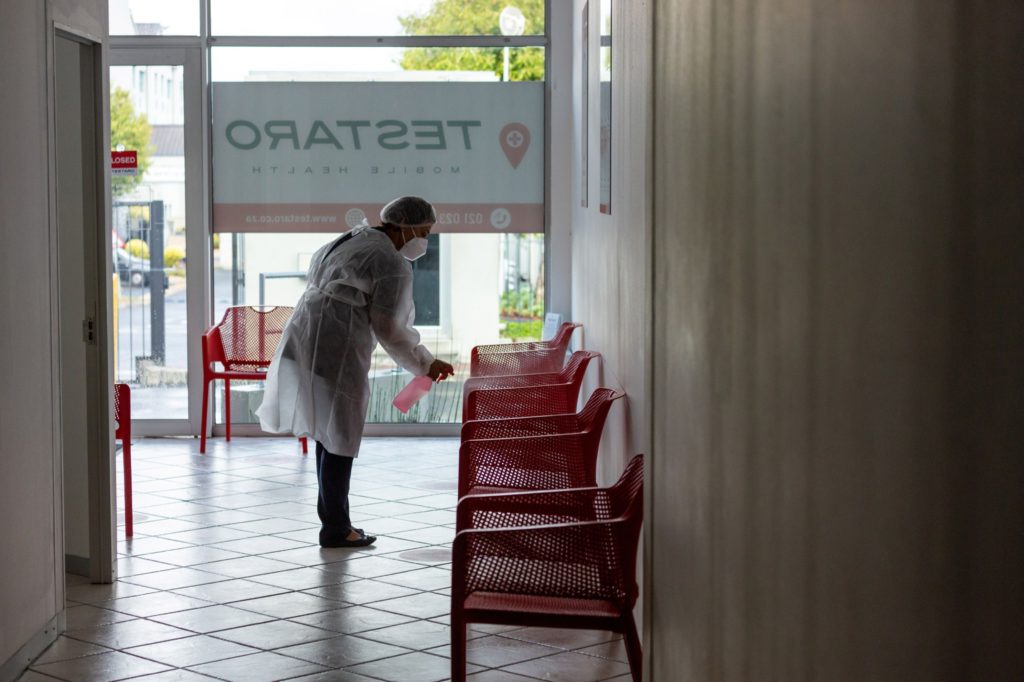(Bloomberg) — South Africa delivered some positive news on the omicron coronavirus variant on Friday, reporting a much lower rate of hospital admissions and signs that the wave of infections may be peaking.
Only 1.7% of identified Covid-19 cases were admitted to hospital in the second week of infections in the fourth wave, compared with 19% in the same week of the third delta-driven wave, South African Health Minister Joe Phaahla said at a press conference.
Health officials presented evidence that the strain may be milder, and that infections may already be peaking in the country’s most populous province, Gauteng.
Still, new cases in that week of the current wave were more than 20,000 a day, compared with 4,400 in the same week of the third wave. That’s further evidence of omicron’s rapid transmissibility, which a number of other countries, such as the U.K., are also now experiencing.
South Africa, which announced the discovery of the variant on Nov. 25, is being watched as a harbinger of what may happen with omicron elsewhere.
Scientists have cautioned that other nations may have a different experience to South Africa as the country’s population is young compared with developed nations. Between 70% and 80% of citizens may also have had a prior Covid-19 infection, according to antibody surveys, meaning they could have some level of protection.
Currently there are about 7,600 people with Covid-19 in South African hospitals, about 40% of the peak in the second and third waves. Excess deaths, a measure of the number of deaths against a historical average, are just below 2,000 a week, an eighth of their previous peak.
“We are really seeing very small increases in the number of deaths,” said Michelle Groome, head of health surveillance for the country’s National Institute for Communicable Diseases.
The number of Covid-19 hospitalizations in this wave is also being inflated by the fact that milder patients are being admitted because there is room to accommodate them. Many are there for other complaints but are routinely tested for the pathogen, according to health officials.
“We have seen a decrease in a proportion of people who need to be on oxygen. They are at very low levels,” said Waasila Jassat, a researcher with the NICD. “For the first time there are more non-severe than severe patients in hospital.”











